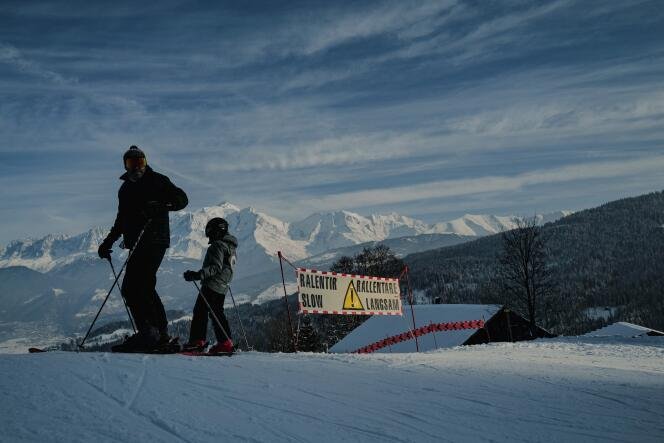The multibillion-dollar ski industry in the USA is confronting the serious implications of climate change, with the National Ski Areas Association identifying it as “the number one threat to the snowsports industry.” The significance of snow, often referred to as “white gold,” plays a pivotal role in the U.S. ski industry, valued at up to $58 billion annually.
Over the decades, snow has remained the lifeblood for skiers and the ski industry as a whole. However, the warming of the globe is causing an overall decrease in snowfall. Data from the Rutgers University Global Snow Lab reveals that between 1972 and 2020, the average portion of North America covered by snow diminished at a rate of about 1,870 square miles per year, approximately the size of Delaware.
This decline in snow cover is anticipated to persist, posing a severe threat to the ski industry in the coming decades. Adrienne Saia Isaac, spokesperson for the Ski Areas Association, emphasizes that climate change represents an “existential threat” to the industry, extending beyond the realms of skiing and snowboarding.
The snowsports industry is inherently weather-dependent, and its sustainability hinges on the availability of snow. Saia Isaac notes that while the industry is accustomed to the uncertainties inherent in the business, climate change intensifies these challenges across the 37 states and six regions where ski areas operate.
A 2021 research study published in the journal Tourism Management Perspectives underscores the substantial risk climate change poses to the profitability and sustainability of ski tourism. The study emphasizes the impact of reduced and more variable natural snow, coupled with increased snowmaking requirements and costs.
Multiple facets of snow measurement reveal significant declines:
- Total snowfall has decreased in many parts of the U.S. since 1930, with 57% of stations showing a decline, according to the Environmental Protection Agency.
- From 1972 to 2013, the U.S. snow cover season shortened by nearly two weeks on average, as reported by the National Oceanic and Atmospheric Administration.
- Between 1982 and 2021, the snowpack season became shorter at about 86% of the sites where snowpack was measured, with an average decrease of about 18 days, according to the U.S. Department of Agriculture.
Despite initial observations that ski seasons were getting longer due to massive investments in snowmaking during the 1980s, 1990s, and 2000s, recent trends suggest a stabilization and slight decline in average ski seasons in the 2010s. This shift signals that snowmaking can no longer fully compensate for warming temperatures, marking the end of the era of peak ski seasons in the U.S.
Acknowledging the seriousness of climate change, the ski industry is actively addressing its impact. Resorts, brands, and communities are engaging with policymakers, investing in green technology, and advocating for reduced greenhouse gas emissions, according to Elizabeth Burakowski, a climate scientist at the University of New Hampshire.
While the U.S. ski industry continues to thrive with record skier visits and participation, extreme weather events pose challenges to ski areas. Although snowmaking provides a certain level of resilience, technical limits exist, and its efficiency diminishes as temperatures rise.
The future of the ski industry in the U.S. rests on the trajectory of emissions. In a low-emission future aligned with Paris Climate Agreement targets, the industry may experience some changes but would remain recognizable. However, under a higher emission scenario, the U.S. ski industry could face an unrecognizable transformation, highlighting the urgent need for sustainable practices to ensure its longevity in a warmer world.
